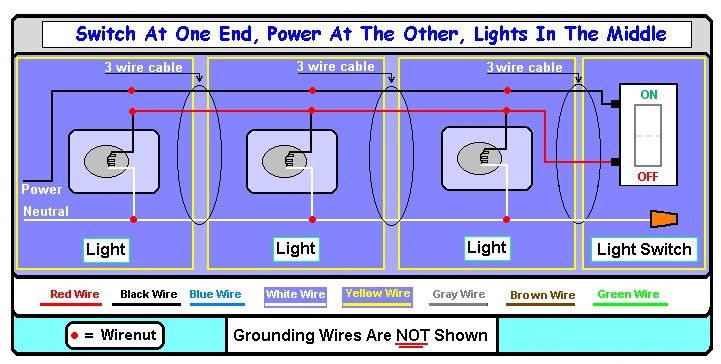JPRambo
Platinum Member
The wiring in the picture is correct for that situation. But I usually would use the red between lights (less confusing for the novice). But even less confusing would be to put the power into the left light and run to the right two switches. This would also eliminate the need for 3 wire cable.
in the wiring with 2 wire in all boxes, the white (marking it with a wrap of black tape) would be used to carry the power to the switch and the black would be used for the switch to light conductor.
in the wiring with 2 wire in all boxes, the white (marking it with a wrap of black tape) would be used to carry the power to the switch and the black would be used for the switch to light conductor.
